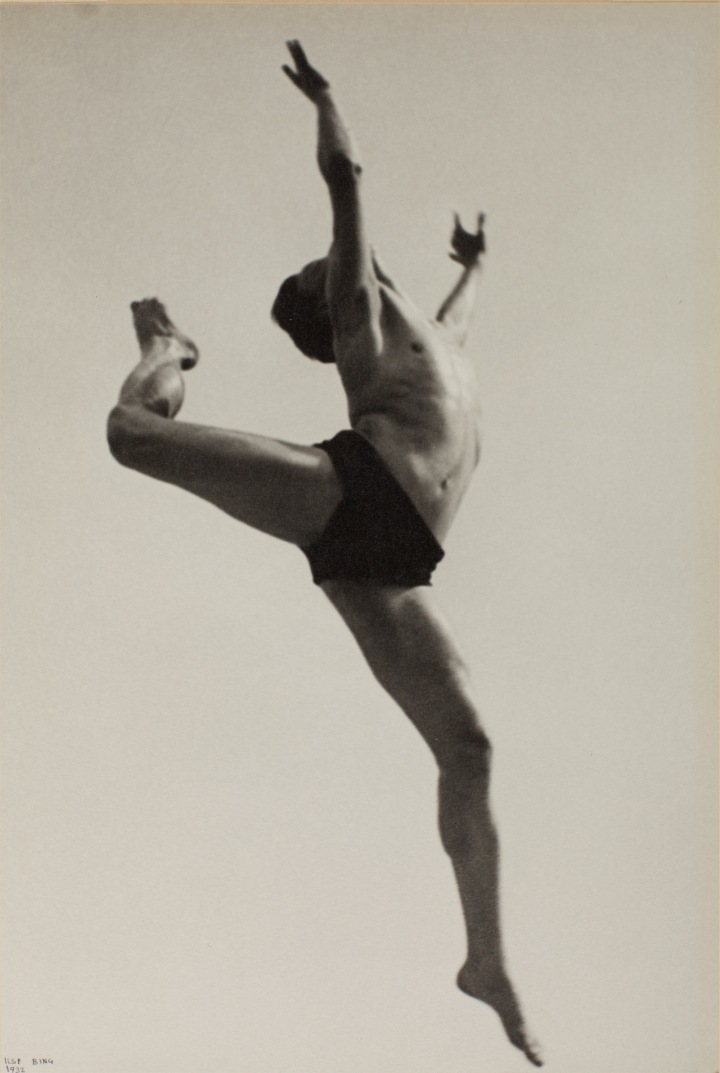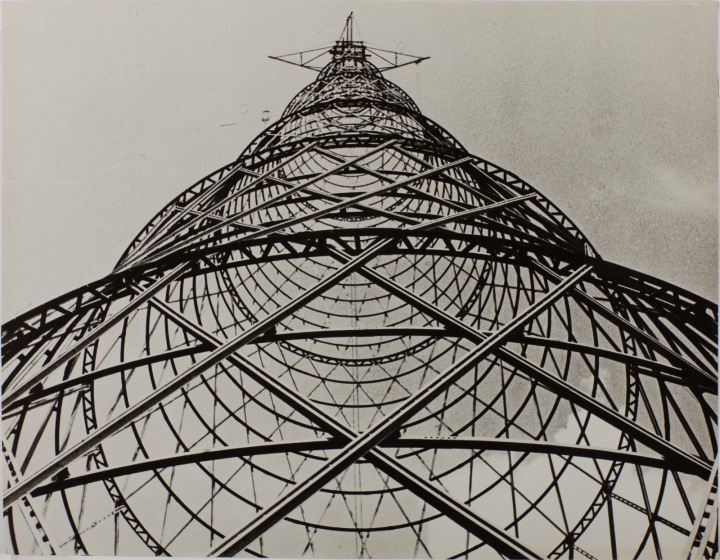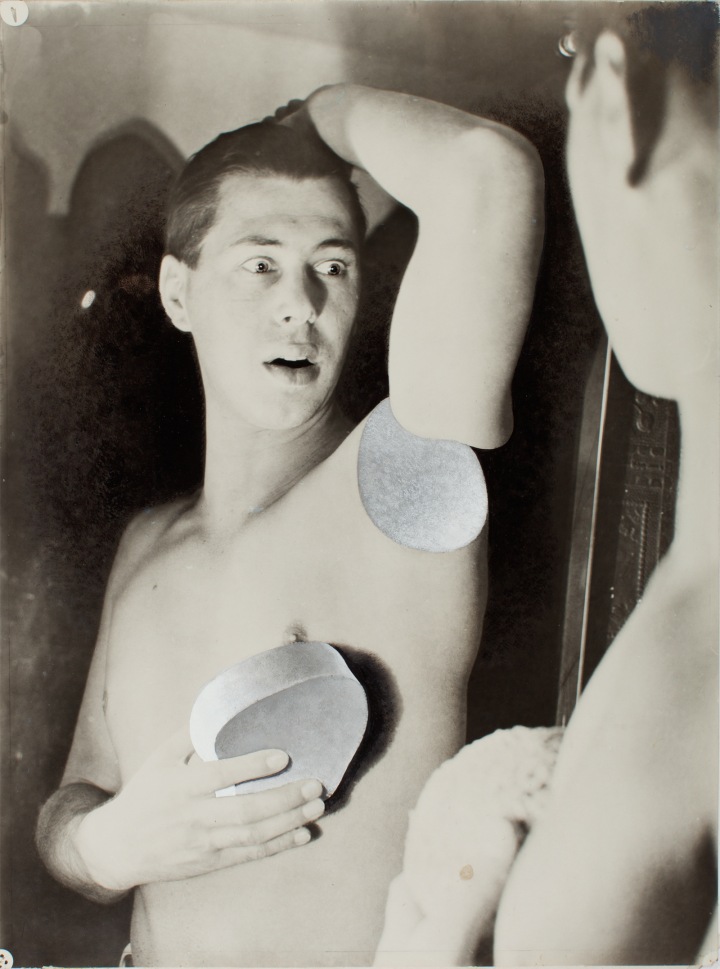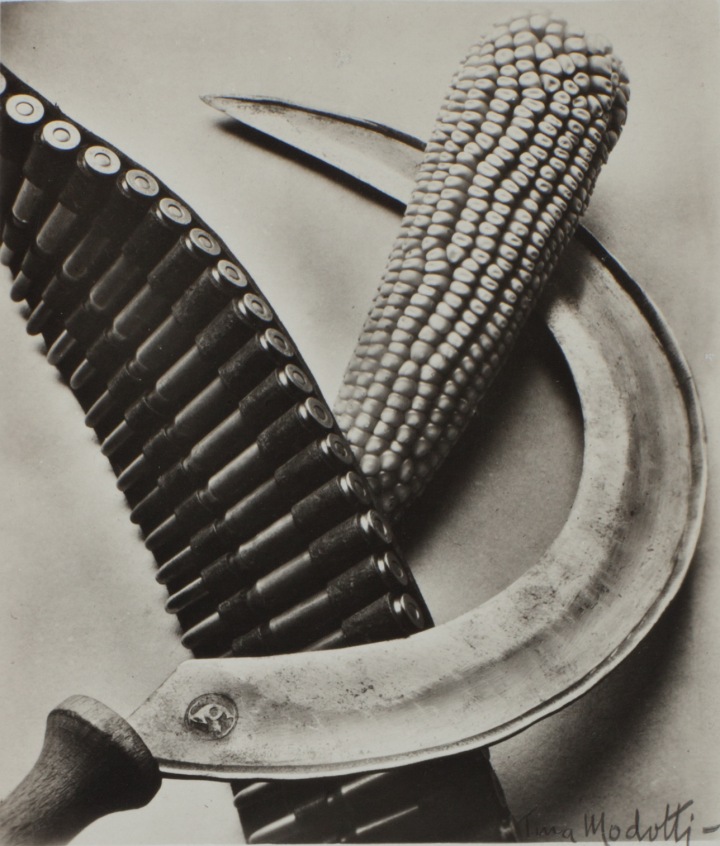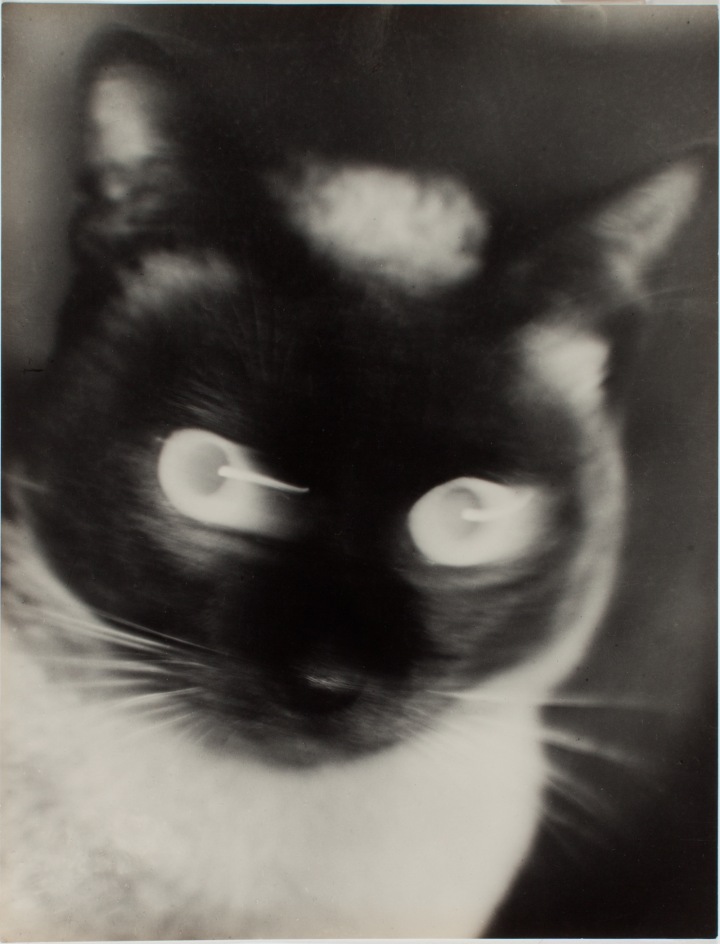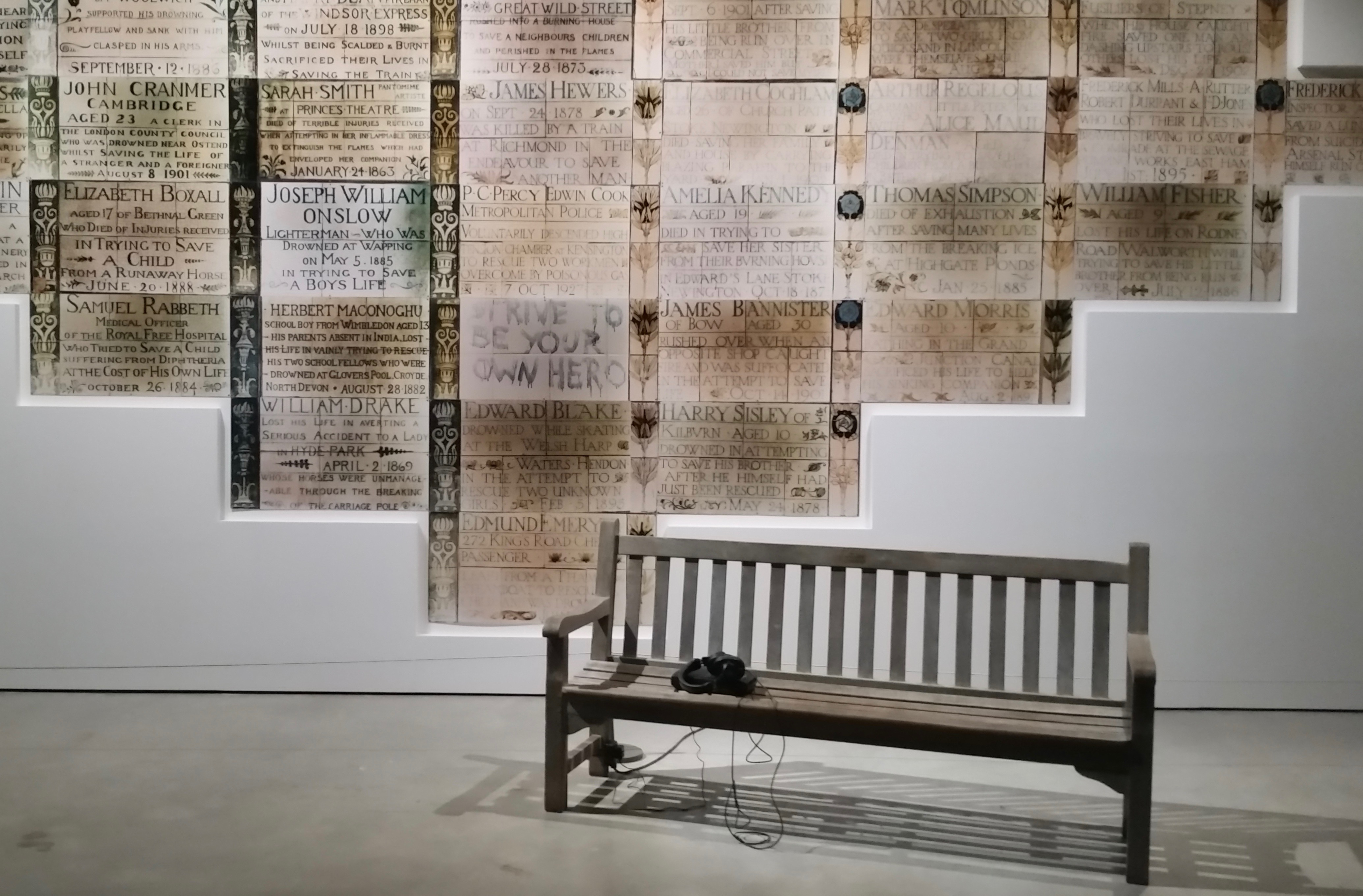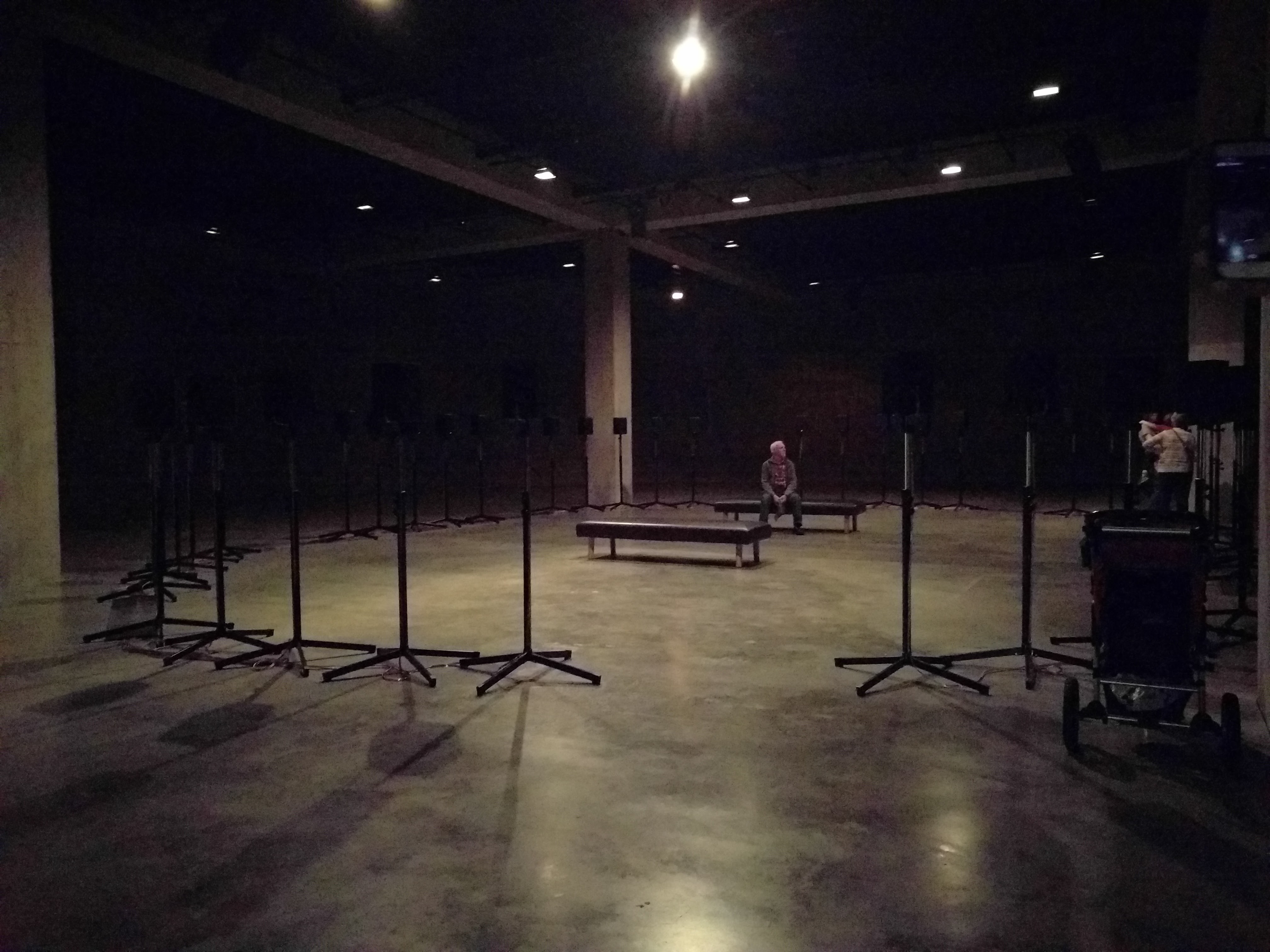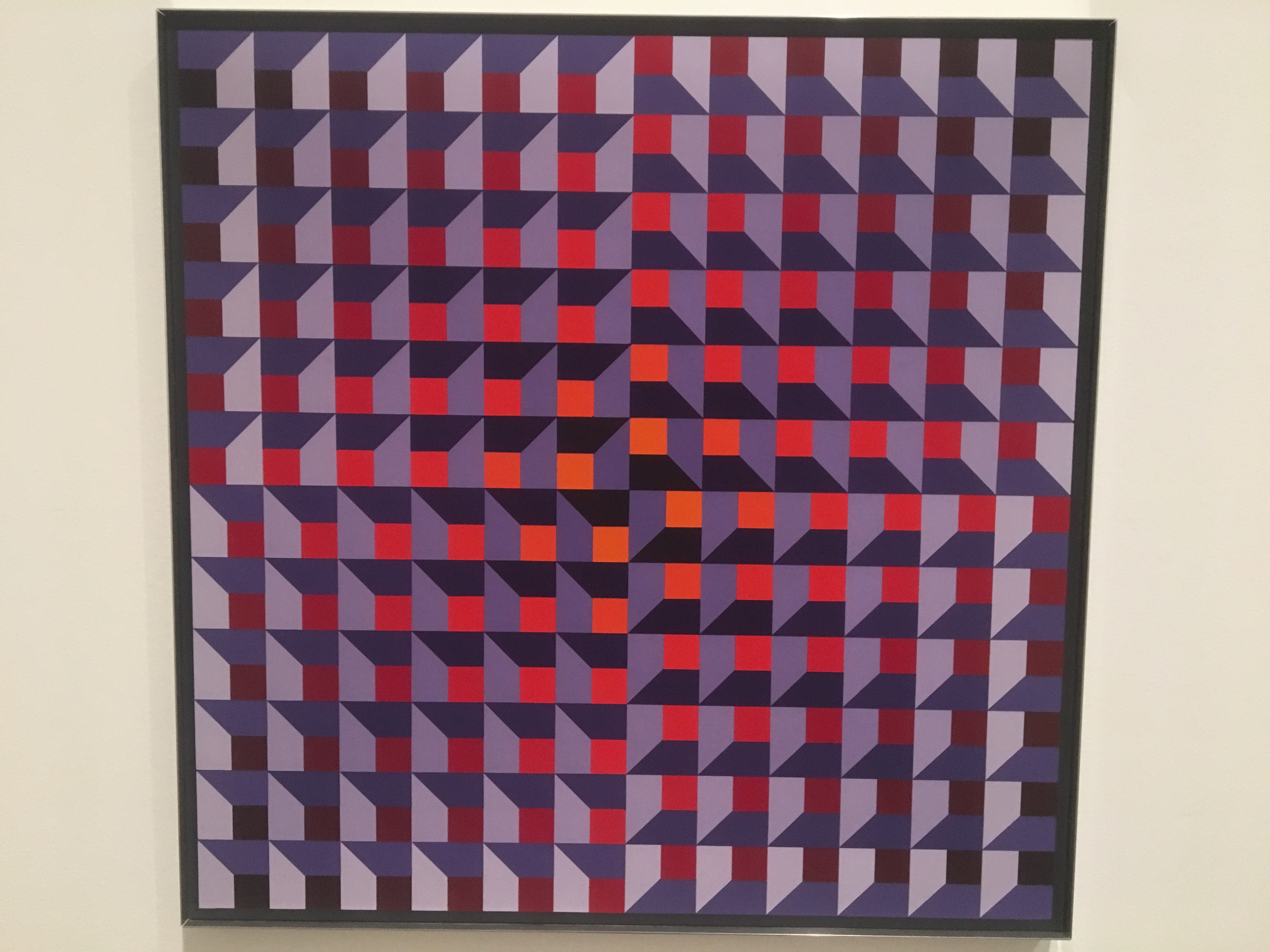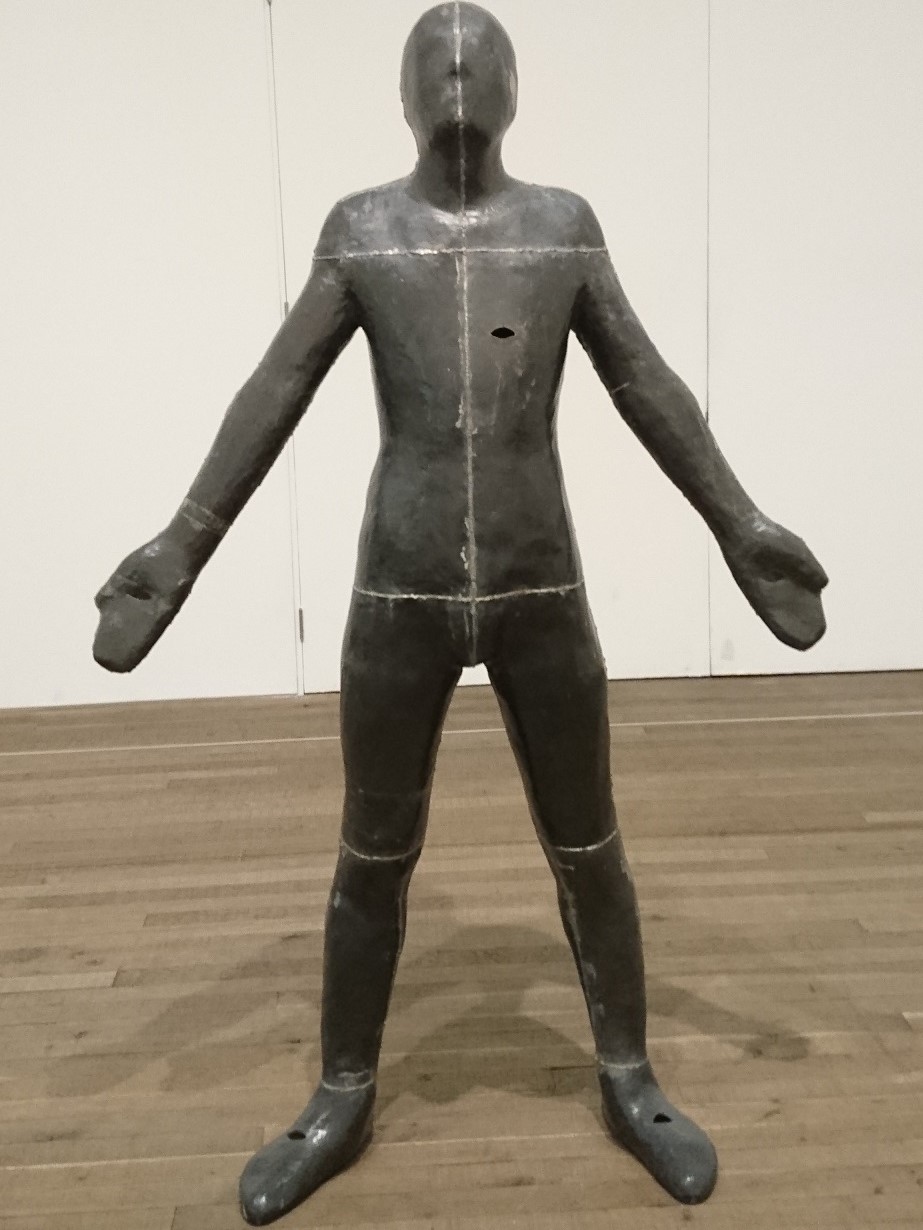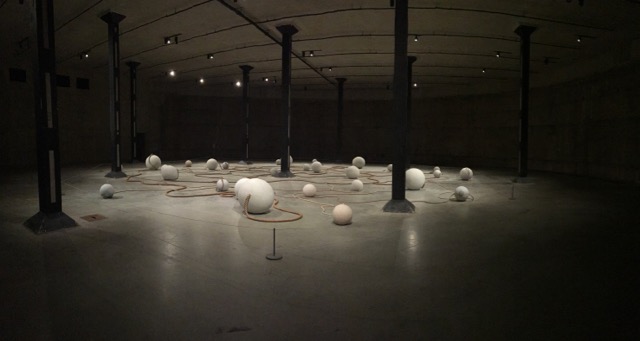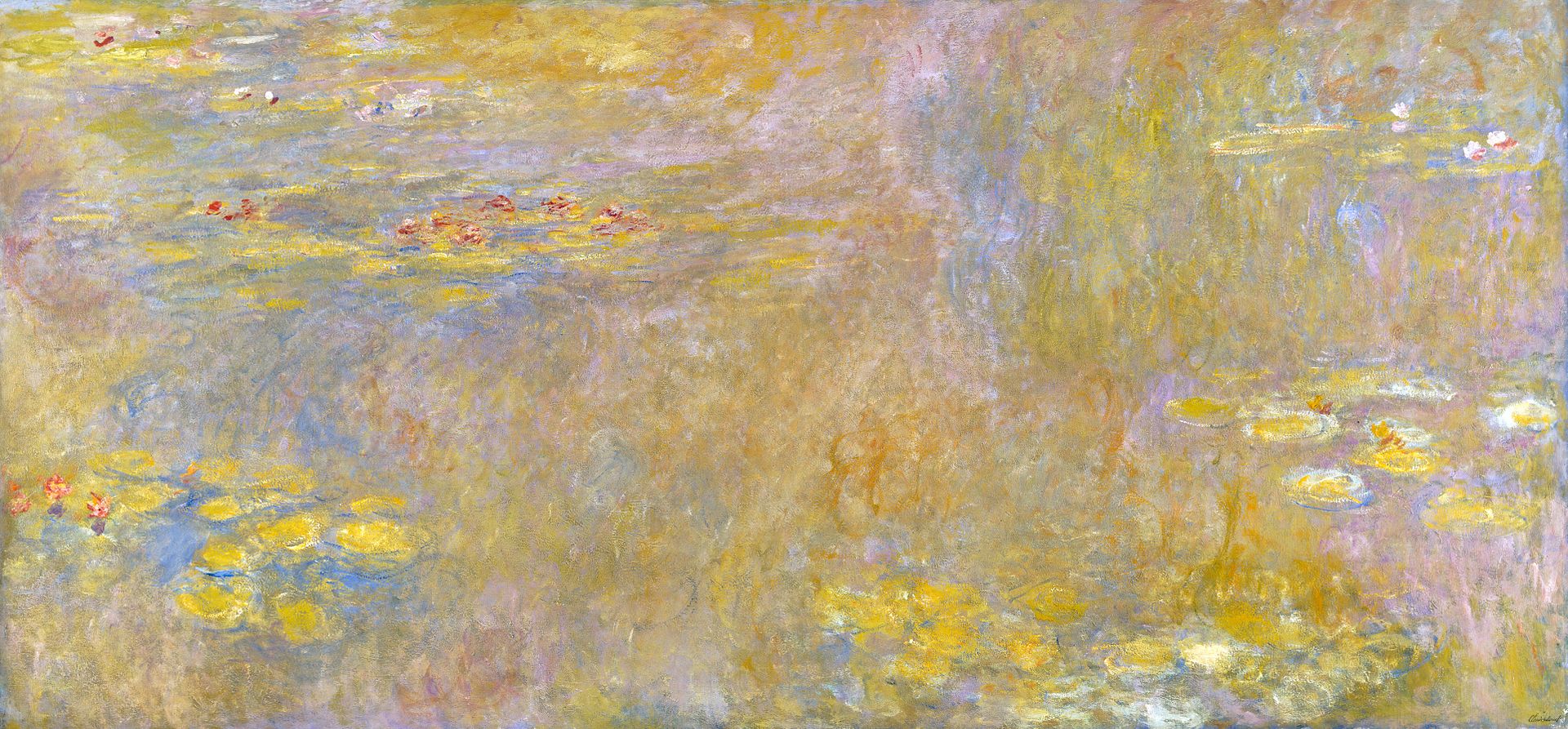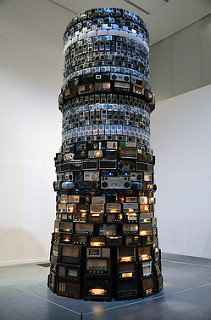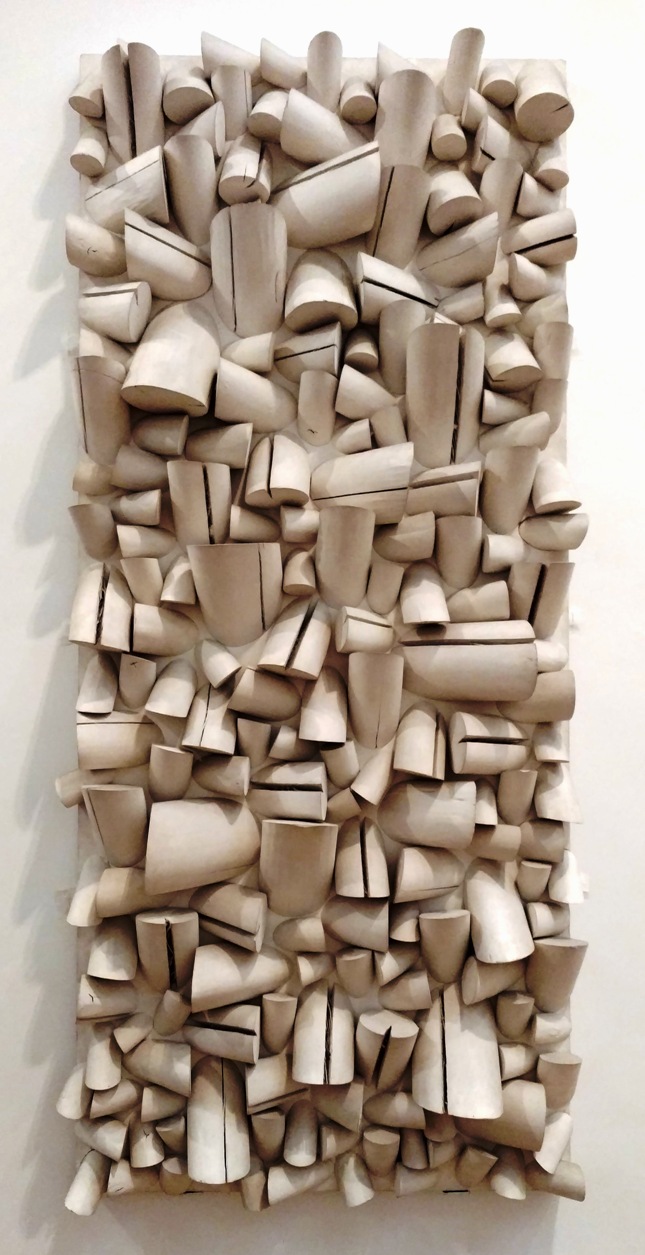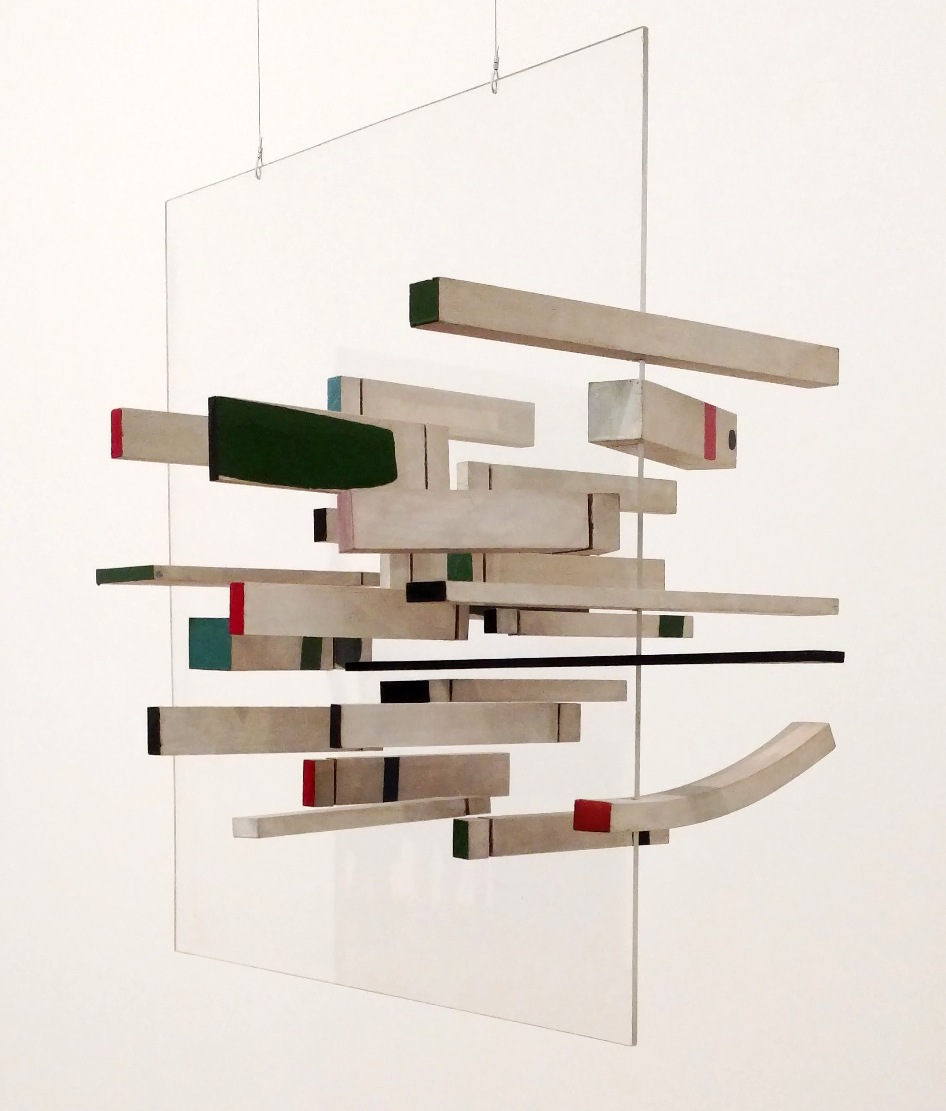Difference between revisions of "Tate Modern"
From Londonhua WIKI
(→Permanent Exhibitions) |
Mthatfalvi (talk | contribs) |
||
| (44 intermediate revisions by 11 users not shown) | |||
| Line 1: | Line 1: | ||
{{Infobox | {{Infobox | ||
| − | |title = Tate Modern | + | |title = [[Tate Modern]] |
| − | + | |header1 = [[Tate Modern]] | |
|bodystyle = width:25em | |bodystyle = width:25em | ||
|image = [[File:Tate.jpg|x450px|alt=Article Image]] | |image = [[File:Tate.jpg|x450px|alt=Article Image]] | ||
| − | |||
|label2 = '''Director''' | |label2 = '''Director''' | ||
|data2 = Frances Morris | |data2 = Frances Morris | ||
| Line 16: | Line 15: | ||
[[Category:Art]] | [[Category:Art]] | ||
=Overview= | =Overview= | ||
| − | The | + | <br> |
| + | The [[Tate Modern]] was created in 1992, by its board of trustees, to dedicate a gallery to modern and contemporary art. The location was chosen to be the site of the old Bankside Power station and Swiss architects were chosen to change the space into an art gallery. When the building plans were revealed, the English Partnerships generation agency donated a £12 million grant to the cause. The [[Tate Modern]] was opened in 2000 and it is rated as one of the top tourists attractions in London<ref> History of Tate. (n.d.). Retrieved May 19, 2017, from http://www.tate.org.uk/about/who-we-are/history-of-tate#modern</ref>. | ||
<br><br> | <br><br> | ||
__TOC__ | __TOC__ | ||
| Line 23: | Line 23: | ||
=Background= | =Background= | ||
<br> | <br> | ||
| − | Tate Modern is included as part of the Tate group which also includes Tate Britain, Tate Liverpool, Tate St Ives, and Tate Online. The Gallery includes both British and International modern and contemporary art. It is one of the largest contemporary art museums in the world and was established in the year 2000. In the first year that Tate Modern was opened it received over 5.25 million visitors and continues to attract visitors today. | + | Tate Modern is included as part of the Tate group which also includes [[Tate Britain]], Tate Liverpool, Tate St Ives, and Tate Online. The Gallery includes both British and International modern and contemporary art. It is one of the largest contemporary art museums in the world and was established in the year 2000. In the first year that Tate Modern was opened it received over 5.25 million visitors and continues to attract visitors today. |
<br><br> | <br><br> | ||
==Temporary Exhibitions== | ==Temporary Exhibitions== | ||
| Line 60: | Line 60: | ||
===Forty Part Motet=== | ===Forty Part Motet=== | ||
[[File:FortyPartMotet.jpg|400px|right]] | [[File:FortyPartMotet.jpg|400px|right]] | ||
| − | Created by Janet Cardiff and found in the 'Tanks' galleries on the bottom floor on the museum, this piece is an experimental audio installation. Forty speakers are arranged in a circle around the room, facing inwards towards an observation area. Each speaker plays a single voice of a singer in the forty member Salisbury Cathedral Choir. The sounds of the voices blend together and come from different areas of the room as you listen to the choir singing rearranged versions of choir songs dating back to the sixteenth century. | + | Created by Janet Cardiff and found in the 'Tanks' galleries on the bottom floor on the museum, this piece is an experimental audio installation. Forty speakers are arranged in a circle around the room, facing inwards towards an observation area. Each speaker plays a single voice of a singer in the forty member Salisbury Cathedral Choir. The sounds of the voices blend together and come from different areas of the room as you listen to the choir singing rearranged versions of choir songs dating back to the sixteenth century. The artist was interested in seeing what path people would walk through the circle as well as what kinds of emotions music can bring about. |
<br> | <br> | ||
<br> | <br> | ||
| − | + | ||
| − | |||
===Ambiguous Structure No.92=== | ===Ambiguous Structure No.92=== | ||
This piece was created by Jean-Pierre Yvaral in 1969. It was created using acrylic paint on a chipboard. Previously Yvaral used on black and white but began experimenting with color in the '60s. This painting uses highly contrasting color and geometrical shapes to produce three-dimensional effects. | This piece was created by Jean-Pierre Yvaral in 1969. It was created using acrylic paint on a chipboard. Previously Yvaral used on black and white but began experimenting with color in the '60s. This painting uses highly contrasting color and geometrical shapes to produce three-dimensional effects. | ||
| Line 83: | Line 82: | ||
<br> | <br> | ||
<br> | <br> | ||
| + | |||
| + | ===Little Dancer Aged Fourteen=== | ||
| + | <br> | ||
| + | This sculpture by Edgar Degas shows a fourteen-year-old ballet student. Degas first sculpted the nude model, a pupil in the ballet class at the Opéra named Marie Van Goethen, out of a reddish-brown wax before adding clothes made of actual fabric.The piece was first exhibited in 1881 at the sixth Impressionist exhibit and received a great deal of attention for its extremely lifelike features. The first bronze cast of the sculpture was made in 1922. 72 casts have been made, and all were dressed after the original by Degas' niece Jeanne Fèvre. The original wax sculpture now belongs to Mr. and Mrs. Paul Mellon in Washington, DC<ref>Little Dancer Aged Fouteen. (n.d.). Retrieved May 19, 2017, from http://www.tate.org.uk/art/artworks/degas-little-dancer-aged-fourteen-n06076</ref>. | ||
| + | <br><br> | ||
===Marilyn Diptych=== | ===Marilyn Diptych=== | ||
| Line 93: | Line 97: | ||
<br> | <br> | ||
<br> | <br> | ||
| + | ===Wetin You Go Do?=== | ||
| + | <br> | ||
| + | |||
| + | In this piece created in 2015 by artist Otobong Nkanga integration of voices and sculpture reflect on contemporary anxieties. The exhibit is made up of concrete spheres that are connected to each other by large heavy ropes. From three of the spheres you can hear sound, which is carefully layered, each one representing an imaginary character. The sound tracks are part song and part narrative. It also includes 'profound' statements in English, French, and Nigerian Pidgin. The dialogues are the characters reflecting on lives difficulties when they are asked the question "Wetin you go do?" a term that means "What are you going to do?". The way that the spheres are arranged is to mimic how small groups gather. The ropes are representing networks in a society. Some may say with how heavy the ball are that is is also a metaphor for how it is impossible to move forward alone. | ||
| + | |||
| + | <gallery mode= "packed"> | ||
| + | [[File:Otobong (1).jpg|400px]] | ||
| + | File:Otobong (1).jpg | ||
| + | </gallery> | ||
| + | |||
| + | ===Claude Monet=== | ||
| + | [[File:Monet_Lilies1.jpg|right|x100px]] | ||
| + | Based on his Japanese-style water-garden in his home, Monet painted the piece ''Water-Lilies.'' The piece verges on abstraction, though key features of the pond can be made out such as the lily pads. This is one of the later pieces in his collection of water-lily paintings that he started in 1897, as it was created in 1916. This is also one of the more abstract pieces lacking more of the contrast of his earlier pieces. | ||
| + | |||
| + | |||
| + | <br><br> | ||
| + | |||
| + | ===Cildo Meireles, Babel=== | ||
| + | [[File: 29119516924 aa2492be2d n.jpg|250px|thumb|Tower of Babel <br> <small> '''Attributed to''' Cildo Meireles (2001), photo by Marc Wathieu (2016) via flickr - [https://www.flickr.com/photos/marcwathieu/29119516924 Link]]] | ||
| + | Babel, finished in 2001, is a large sculpture that looks like a circular tower that is made out of hundreds of radios. The building began in 1990 and was brought to Tate Modern in 2008.<ref name = "bab"> T. (n.d.). 'Babel', Cildo Meireles, 2001. Retrieved May 20, 2017, from http://www.tate.org.uk/art/artworks/meireles-babel-t14041 </ref> According to the Tate Modern website, ''the radios are tuned to a multitude of different stations and are adjusted to the minimum volume at which they are audible. Nevertheless, they compete with each other and create a cacophony of low, continuous sound, resulting in inaccessible information, voices or music.''<ref name = "bab"/> The tower is based on the Tower of Babel from the bible. The story goes that the people wanted to make a tower that would reach heaven. God did not like it and while building caused the people to speak many languages. This then made people scatter around the earth. According to the Babel description the radios are arranged from the older dated on the bottom and on the top more recent. <ref name = "bab" /> | ||
| + | <br><br> | ||
| + | |||
| + | ===How Not to be Seen, Hito Steyerl=== | ||
| + | Hito Steyerl's short film, "How Not to Be Seen," makes a statement on technology, showing the progress of camera capability and how it is becoming harder and harder to not be seen. By showing resolution targets that were installed in the United States to allow for the focusing of aerial surveillance cameras, and the evolution of the clarity and detail of these cameras, Steyerl makes a humorous observation about how the ways to become "invisible" to these are becoming impossible. In the film, the narrator, who is a generic robotic voice, says that in order to become invisible, you must be the size of a pixel or smaller. After this, a group of individuals with boxes for heads begin a dance routine in front of a green screen. | ||
| + | <br><br> | ||
| + | |||
| + | ===Painting with White=== | ||
| + | The painting in white exhibit is located on the second level of the East Boiler House. It features artists that use only white, known as monochromes. White in many works symbolizes purity, but for some it symbolizes superiority and all that is difficult about modern art. Many feel that the colour itself limits their creativity and provides a hard rule to follow by. However, the artists in this room have worked past this and explores the philosophical, poetic, spiritual, and void of white. There are eight works in this gallery. Spiral Movement, R69-26, White plane white, Ecriture 15-78, Epsilon Group II, Ledger, Achrome and Holes are all separate paintings done by 8 separate artists .<ref>T. (n.d.). Painting with White - In the Studio at Tate Modern. Retrieved May 18, 2017, from http://www.tate.org.uk/visit/tate-modern/display/in-the-studio/painting-white </ref> | ||
| + | <br><br> | ||
| + | ===Abstraction and Society=== | ||
| + | Abstract art is associated with societal change. The artists rejected past forms and developed their own style. In the 1950s, Brazilian artists used this form to try to "express complex human realities" and commenting on everyday life. This exhibit focuses on abstract art of the twentieth century from artists associated with the São Paulo Biennal. The pieces were created in various cities and reflect the local styles that developed in each city as well as globally. | ||
| + | [[File:Large Split Relief No. 34-4-74 - Sergio de Camargo- sm- JR.jpg|thumb|left|175px|<div align="center">Large Split Relief No.34/4/74</div>]] | ||
| + | [[File:Abstract in White, Green, Black, Blue, Red, Grey and Pink - Victor Pasmore- sm- JR.jpg|thumb|right|280px|<div align="center">Abstract in White, Green, Black, Blue, Red, Grey and Pink</div>]] | ||
| + | <br> | ||
| + | ====Large Split Relief No.34/4/74==== | ||
| + | Sergio de Camargo created several pieces similar to Large Split Relief. They are white monochrome and are composed of diagonally cut round wood. The design mimics crystalline growth. The shapes result in an array of light and shadows across the piece. The rough imperfections are supposed to stand in contrast to the methodic and precise nature of art. | ||
| + | <br><br> | ||
| + | ====Abstract in White, Green, Black, Blue, Red, Grey and Pink==== | ||
| + | The artist of this piece, Victor Pasmore, based his art on natural forms. Pasmore tried to blend his three dimensional art with natural elements. He believed geometry held natural elements. Therefore, geometric shapes, horizontal lines, vertical lines and diagonal lines were all natural. A tilting line, however, was not natural. | ||
| + | |||
| + | ==== Repetition Against the Blue ==== | ||
| + | {{Infobox | ||
| + | |title = Repetition Against the Blue | ||
| + | |bodystyle = width:25em | ||
| + | |image = [[File:blue.png|x150px|alt=Article Image]] | ||
| + | |label2 = Artist | ||
| + | |data2 = Josef Albers | ||
| + | }} | ||
| + | Josef Albers, the artist of this piece, was entranced by the way things are perceived. His purpose for this piece was to challenge our ability to distinguish the background from what the observer is supposed to actually be looking at. The blue and shadowing also challenge the observer to understand the 3-dimensional shape the painter is trying to depict. Many of his visions were brought to fruition by the environment around him at the Black Mountain College in North Carolina. | ||
| + | <br><br> | ||
| + | |||
| + | ==== Composition B (No.II) with Red ==== | ||
| + | {{Infobox | ||
| + | |title = Composition B (No.II) with Red | ||
| + | |bodystyle = width:25em | ||
| + | |image = [[File:red.jpg|x150px|alt=Article Image]] | ||
| + | |label2 = Artist | ||
| + | |data2 = Piet Mondrian | ||
| + | }} | ||
| + | Piet Mondrian’s goal with this painting was to emphasize the modernist art movement by displaying its fundamentals. He utilized the singular color of red to create an emphasis on black lines and the negative space around it. It creates a focus on the red and also you see that there is a lack of symmetry that puts the observer a little on edge. | ||
| + | <br> <br> | ||
| + | <br><br><br><br><br> | ||
=References= | =References= | ||
Latest revision as of 15:33, 21 June 2017
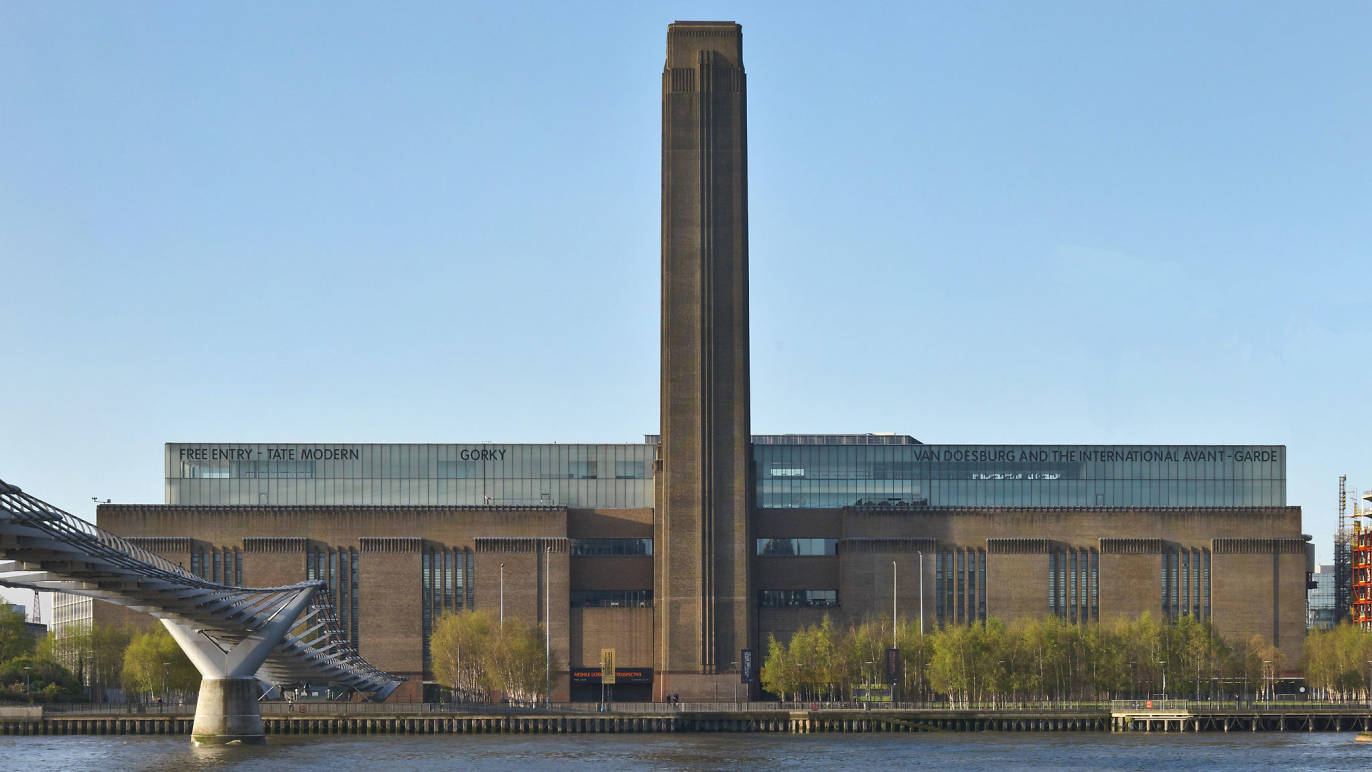 | |
| Tate Modern | |
|---|---|
| Director | Frances Morris |
| Established | 2000; 17 years ago |
| Location | Bankside, London SE1 9TG, UK |
Overview
The Tate Modern was created in 1992, by its board of trustees, to dedicate a gallery to modern and contemporary art. The location was chosen to be the site of the old Bankside Power station and Swiss architects were chosen to change the space into an art gallery. When the building plans were revealed, the English Partnerships generation agency donated a £12 million grant to the cause. The Tate Modern was opened in 2000 and it is rated as one of the top tourists attractions in London[1].
Contents
- 1 Overview
- 2 Background
- 2.1 Temporary Exhibitions
- 2.2 Permanent Exhibitions
- 2.2.1 Artist and Society
- 2.2.2 Living in the City
- 2.2.3 Media Networks
- 2.2.4 Monument 1980-1
- 2.2.5 Forty Part Motet
- 2.2.6 Ambiguous Structure No.92
- 2.2.7 Modern Christ Figure
- 2.2.8 Little Dancer Aged Fourteen
- 2.2.9 Marilyn Diptych
- 2.2.10 Liquid Crystal Environment
- 2.2.11 Wetin You Go Do?
- 2.2.12 Claude Monet
- 2.2.13 Cildo Meireles, Babel
- 2.2.14 How Not to be Seen, Hito Steyerl
- 2.2.15 Painting with White
- 2.2.16 Abstraction and Society
- 3 References
- 4 External Links
- 5 Image Gallery
Background
Tate Modern is included as part of the Tate group which also includes Tate Britain, Tate Liverpool, Tate St Ives, and Tate Online. The Gallery includes both British and International modern and contemporary art. It is one of the largest contemporary art museums in the world and was established in the year 2000. In the first year that Tate Modern was opened it received over 5.25 million visitors and continues to attract visitors today.
Temporary Exhibitions
The Radical Eye
"THE RADICAL EYE: Modernist Photography from the Sir Elton John Collection" is one of the greatest collections of photography drawn from the classic modernist period of the 1920s to the 1950s. For the past twenty-five years, Sir Elton John has brought together this collection that includes portraits of Matisse, Picasso, and Breton, among other great artists. "With over 70 artists and nearly 150 rare vintage prints on show from seminal figures including Brassai, Imogen Cunningham, André Kertész, Dorothea Lange, Tina Modotti, and Aleksandr Rodchenko, this is a chance to take a peek inside Elton John’s home and delight in seeing such masterpieces of photography." [2].
This exhibition will be available;e until May 21st 2017 and what makes the visit to it most existing is that you are able to look at the photographs while listening to Sir Elton John narrating their meanings and who he deceased to add them to his personal collection, which is usually kept in his house in Atlanta. From his own voice you can also listen about the works that inspire him, and get insights into the techniques and innovations of the period from curator Shoair Mavlian.
Permanent Exhibitions
Artist and Society
The Artist and Society collection aims to show the relationships between artists and social ideas and problems. The art features ranges from scenes of Civil War to protest to "utopia". This gallery is all about the way that artists express social realities through their art forms, whether that is through painting or sculpture or even photography and video. Some of the artists featured in the exhibit are Salvador Dalí and Richard Hamilton. To read more about the gallery click here.
Living in the City
On the fourth floor of the gallery, there's an exhibit tucked away in the back corner called Living in the City. This exhibit goes through a few different living conditions in cities during the 1970s. This also explores what Soviet Russia was like during the days where power throughout the union was slowly declining. To learn more about gallery, click here.
Media Networks
This exhibit portrayed the excitement and anxiety generated by the modern city. Artists captured the speed of modern transportation, the rate of industrialization, and the transformative power of technology. The focus of their works mostly consisted of social setting and situations. The developments of new techniques and styles allowed artists to better portray their meaning to make their piece more impactful for the viewer. To learn more about this exhibit click here
Monument 1980-1
Monument 1980-1 gives viewers the chance to privately listen and remember in the setting of a public memorial. This installation consists of 41 photos taken by Susan Hiller of Victoria memorial plaques that were found in a London park. These plaques commemorate an ordinary person who died while performing an act of heroism. In front of the plaques sits a bench with a cassette player where a single person can listen to a commentary done by Hiller on death, memory and representation read my Hiller. The artist also uses this piece of work to memorialize herself as the voice in the artwork. Only one person at a time can listen to the recording forming a one-on-one connection with the artist. Also as the listener sits in the bench with there back to the photographs, the listener is facing the audience and is seen as a part of the artwork for a moment.
Forty Part Motet
Created by Janet Cardiff and found in the 'Tanks' galleries on the bottom floor on the museum, this piece is an experimental audio installation. Forty speakers are arranged in a circle around the room, facing inwards towards an observation area. Each speaker plays a single voice of a singer in the forty member Salisbury Cathedral Choir. The sounds of the voices blend together and come from different areas of the room as you listen to the choir singing rearranged versions of choir songs dating back to the sixteenth century. The artist was interested in seeing what path people would walk through the circle as well as what kinds of emotions music can bring about.
Ambiguous Structure No.92
This piece was created by Jean-Pierre Yvaral in 1969. It was created using acrylic paint on a chipboard. Previously Yvaral used on black and white but began experimenting with color in the '60s. This painting uses highly contrasting color and geometrical shapes to produce three-dimensional effects.
Modern Christ Figure
Human like figure made by Anthony Gormley is a plaster mold of the artist's body that is reinforced with fiberglass. The skin of the body is made from sheets of soldered lead. The body has five eye like holes located on each of his hands, feet and one on his breast. The eyes are presumed to represent the wounds of Christ. However, it is made in such a way that the sculpture does not affiliate with a certain religion as intended by the artist.
Little Dancer Aged Fourteen
This sculpture by Edgar Degas shows a fourteen-year-old ballet student. Degas first sculpted the nude model, a pupil in the ballet class at the Opéra named Marie Van Goethen, out of a reddish-brown wax before adding clothes made of actual fabric.The piece was first exhibited in 1881 at the sixth Impressionist exhibit and received a great deal of attention for its extremely lifelike features. The first bronze cast of the sculpture was made in 1922. 72 casts have been made, and all were dressed after the original by Degas' niece Jeanne Fèvre. The original wax sculpture now belongs to Mr. and Mrs. Paul Mellon in Washington, DC[3].
Marilyn Diptych
After Marilyn Monroe died in 1942 from an overdose of barbiturates, Andy Warhol created 20 different silk paintings of Monroe that were all based on the same photograph. The paintings of the photograph from the 1953 film Niagara took a total of four months to complete. Warhol was fascinated because Monroe was a combination of cult of celebrities and death which were his two main themes. To portray this, he repeated her image to demonstrate her importance to the media. At that time, her face would have been everywhere on every medium. The drastic contrasts between colors show Monroe's mortality as they eventually fade to black and white.
Liquid Crystal Environment
This exhibit was created by Gustav Metzger and is made from five projectors that each have heat-sensitive liquid crystals in their slides. The slides are rotated to create movement. This movement then translates into heating and cooling the crystals to alter their colors. "Auto-destructive art" invented by Metzger in 1959, and suggested the idea that man-made machines and substances will degrade and that they aren't reliable and neither is society's preoccupation of destruction. This exhibit is an example of the opposite: auto-creation. Even though man-made machines are a large part to this project, they are used to create different patterns of the crystals and to construct the immense space within the exhibit. 1963 was when Metzger began experimenting with different displays and was then joined by a physicist in 1965. He showed his results to The Bartlett Society and also Cambridge University. Then his works were displayed in various galleries before finally ending up in Tate Modern.
Wetin You Go Do?
In this piece created in 2015 by artist Otobong Nkanga integration of voices and sculpture reflect on contemporary anxieties. The exhibit is made up of concrete spheres that are connected to each other by large heavy ropes. From three of the spheres you can hear sound, which is carefully layered, each one representing an imaginary character. The sound tracks are part song and part narrative. It also includes 'profound' statements in English, French, and Nigerian Pidgin. The dialogues are the characters reflecting on lives difficulties when they are asked the question "Wetin you go do?" a term that means "What are you going to do?". The way that the spheres are arranged is to mimic how small groups gather. The ropes are representing networks in a society. Some may say with how heavy the ball are that is is also a metaphor for how it is impossible to move forward alone.
Claude Monet
Based on his Japanese-style water-garden in his home, Monet painted the piece Water-Lilies. The piece verges on abstraction, though key features of the pond can be made out such as the lily pads. This is one of the later pieces in his collection of water-lily paintings that he started in 1897, as it was created in 1916. This is also one of the more abstract pieces lacking more of the contrast of his earlier pieces.
Cildo Meireles, Babel
Babel, finished in 2001, is a large sculpture that looks like a circular tower that is made out of hundreds of radios. The building began in 1990 and was brought to Tate Modern in 2008.[4] According to the Tate Modern website, the radios are tuned to a multitude of different stations and are adjusted to the minimum volume at which they are audible. Nevertheless, they compete with each other and create a cacophony of low, continuous sound, resulting in inaccessible information, voices or music.[4] The tower is based on the Tower of Babel from the bible. The story goes that the people wanted to make a tower that would reach heaven. God did not like it and while building caused the people to speak many languages. This then made people scatter around the earth. According to the Babel description the radios are arranged from the older dated on the bottom and on the top more recent. [4]
How Not to be Seen, Hito Steyerl
Hito Steyerl's short film, "How Not to Be Seen," makes a statement on technology, showing the progress of camera capability and how it is becoming harder and harder to not be seen. By showing resolution targets that were installed in the United States to allow for the focusing of aerial surveillance cameras, and the evolution of the clarity and detail of these cameras, Steyerl makes a humorous observation about how the ways to become "invisible" to these are becoming impossible. In the film, the narrator, who is a generic robotic voice, says that in order to become invisible, you must be the size of a pixel or smaller. After this, a group of individuals with boxes for heads begin a dance routine in front of a green screen.
Painting with White
The painting in white exhibit is located on the second level of the East Boiler House. It features artists that use only white, known as monochromes. White in many works symbolizes purity, but for some it symbolizes superiority and all that is difficult about modern art. Many feel that the colour itself limits their creativity and provides a hard rule to follow by. However, the artists in this room have worked past this and explores the philosophical, poetic, spiritual, and void of white. There are eight works in this gallery. Spiral Movement, R69-26, White plane white, Ecriture 15-78, Epsilon Group II, Ledger, Achrome and Holes are all separate paintings done by 8 separate artists .[5]
Abstraction and Society
Abstract art is associated with societal change. The artists rejected past forms and developed their own style. In the 1950s, Brazilian artists used this form to try to "express complex human realities" and commenting on everyday life. This exhibit focuses on abstract art of the twentieth century from artists associated with the São Paulo Biennal. The pieces were created in various cities and reflect the local styles that developed in each city as well as globally.
Large Split Relief No.34/4/74
Sergio de Camargo created several pieces similar to Large Split Relief. They are white monochrome and are composed of diagonally cut round wood. The design mimics crystalline growth. The shapes result in an array of light and shadows across the piece. The rough imperfections are supposed to stand in contrast to the methodic and precise nature of art.
Abstract in White, Green, Black, Blue, Red, Grey and Pink
The artist of this piece, Victor Pasmore, based his art on natural forms. Pasmore tried to blend his three dimensional art with natural elements. He believed geometry held natural elements. Therefore, geometric shapes, horizontal lines, vertical lines and diagonal lines were all natural. A tilting line, however, was not natural.
Repetition Against the Blue
 | |
| Artist | Josef Albers |
|---|---|
Josef Albers, the artist of this piece, was entranced by the way things are perceived. His purpose for this piece was to challenge our ability to distinguish the background from what the observer is supposed to actually be looking at. The blue and shadowing also challenge the observer to understand the 3-dimensional shape the painter is trying to depict. Many of his visions were brought to fruition by the environment around him at the Black Mountain College in North Carolina.
Composition B (No.II) with Red
| x150px | |
| Artist | Piet Mondrian |
|---|---|
Piet Mondrian’s goal with this painting was to emphasize the modernist art movement by displaying its fundamentals. He utilized the singular color of red to create an emphasis on black lines and the negative space around it. It creates a focus on the red and also you see that there is a lack of symmetry that puts the observer a little on edge.
References
- ↑ History of Tate. (n.d.). Retrieved May 19, 2017, from http://www.tate.org.uk/about/who-we-are/history-of-tate#modern
- ↑ T. (n.d.). The Radical Eye: Modernist Photography from the Sir Elton John Collection - Exhibition at Tate Modern. Retrieved May 16, 2017, from http://www.tate.org.uk/whats-on/tate-modern/exhibition/radical-eye-modernist-photography-sir-elton-john-collection
- ↑ Little Dancer Aged Fouteen. (n.d.). Retrieved May 19, 2017, from http://www.tate.org.uk/art/artworks/degas-little-dancer-aged-fourteen-n06076
- ↑ 4.0 4.1 4.2 T. (n.d.). 'Babel', Cildo Meireles, 2001. Retrieved May 20, 2017, from http://www.tate.org.uk/art/artworks/meireles-babel-t14041
- ↑ T. (n.d.). Painting with White - In the Studio at Tate Modern. Retrieved May 18, 2017, from http://www.tate.org.uk/visit/tate-modern/display/in-the-studio/painting-white
External Links
If appropriate, add an external links section
Image Gallery
If appropriate, add an image gallery

